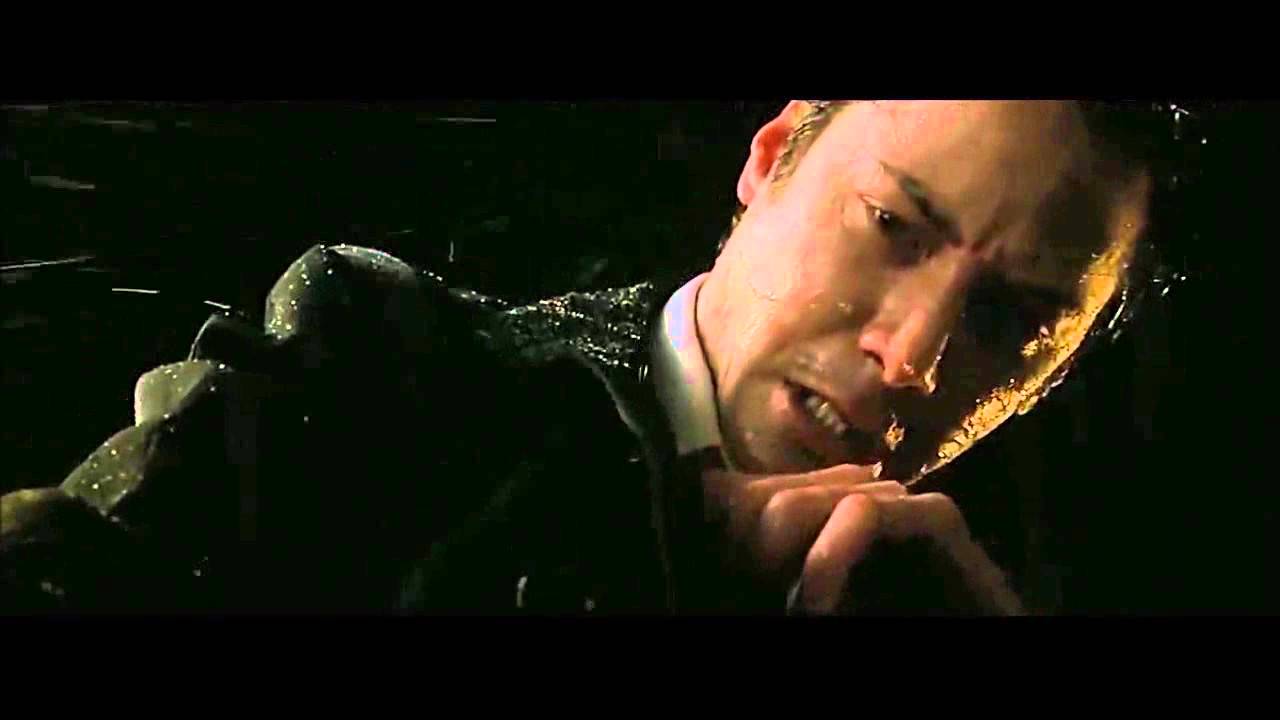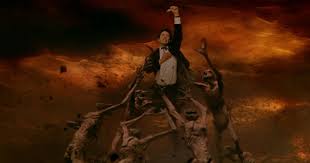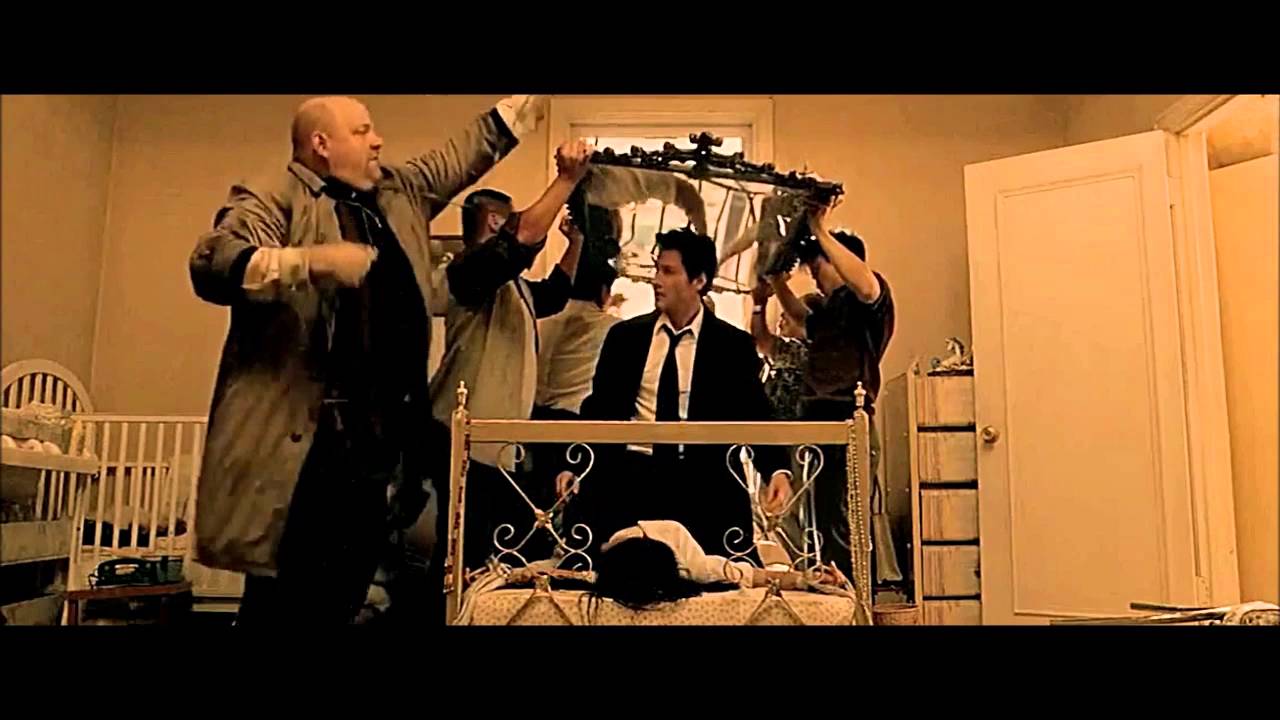Constantine (2005)

Constantine (2005) – A Dark and Gritty Supernatural Thriller That Deserved a Sequel
Introduction
Constantine (2005) is a supernatural action-thriller directed by Francis Lawrence in his feature film debut. Based on Hellblazer, a popular DC/Vertigo comic series, the film stars Keanu Reeves as John Constantine, an exorcist and demonologist with the ability to see angels and demons walking the earth. Unlike typical comic book adaptations, Constantine blends noir storytelling, horror, and theological themes, creating a visually stunning and philosophically intriguing film.
Although the film deviates from the comic source material—most notably in making Constantine an American instead of a British character—it has gained a strong cult following over the years. With its moody cinematography, complex themes of redemption and faith, and a stellar supporting cast including Rachel Weisz, Tilda Swinton, and Peter Stormare, Constantine remains one of the most unique comic book adaptations of the 2000s.
This review explores the film’s plot, themes, character development, cinematography, visual effects, critical reception, and why fans have been demanding a sequel for nearly two decades.
Plot Summary: A Battle Between Heaven and Hell
John Constantine (Keanu Reeves) is a man caught between two worlds—he was born with the ability to see supernatural beings, a gift that led him to attempt suicide as a young man. Having technically died and returned, Constantine is now condemned to Hell upon his eventual death. As a way of earning redemption, he works as an exorcist, deporting demons that break the rules of the delicate truce between Heaven and Hell.
The story begins with the discovery of the Spear of Destiny, an ancient artifact with a dark history. A man in Mexico stumbles upon it and is immediately possessed by an evil force, setting the stage for apocalyptic events. Meanwhile, Constantine is approached by Angela Dodson (Rachel Weisz), a police detective investigating the apparent suicide of her twin sister, Isabel. Angela believes Isabel’s death was not a suicide but a supernatural event and seeks Constantine’s help.
As Constantine and Angela dig deeper, they uncover a plot involving half-demons, half-angels, and an attempt to bring forth Mammon, the son of Lucifer, into the human world. The powerful archangel Gabriel (Tilda Swinton) is revealed to be aiding Mammon, believing that humanity can only be redeemed through suffering. With time running out, Constantine must use every trick he knows to stop the impending invasion of Hell on Earth.
In the film’s climax, Constantine outsmarts both Gabriel and Mammon by summoning Lucifer (Peter Stormare) himself, knowing that the devil personally wants his soul. Lucifer intervenes, stopping Mammon’s birth, and offers to take Constantine to Hell as a reward. However, Constantine, in an act of self-sacrifice, begs for Angela’s sister’s soul to be released instead. This unselfish act earns him redemption, and Heaven begins to claim his soul. Not wanting to let Constantine escape so easily, Lucifer instead cures his lung cancer and brings him back to life—ensuring that his suffering continues.
The film ends with Constantine choosing to chew gum instead of smoking, signaling a small but meaningful change in his outlook.
Themes: Redemption, Faith, and the Battle Between Good and Evil
1. The Nature of Redemption
One of the core themes in Constantine is the idea of redemption and whether it can truly be earned. Constantine performs exorcisms not out of kindness but to buy his way into Heaven. However, as the film progresses, he learns that true redemption comes from selfless acts, not personal gain.
2. The Thin Line Between Good and Evil
The film presents a complex take on morality, showing that the battle between Heaven and Hell is not as black and white as it seems. Gabriel, an angel, is revealed to have her own twisted view of salvation, while Lucifer, though undoubtedly evil, plays a crucial role in maintaining balance. Constantine himself is neither a hero nor a villain—he operates in a morally gray area.
3. The Cost of Knowledge and Power
Constantine’s ability to see demons and angels is portrayed as more of a curse than a gift. His knowledge of the supernatural world isolates him, causing immense suffering. This aligns with the idea that greater awareness often comes at a heavy price.
Character Analysis: A Strong Cast with Standout Performances
1. John Constantine (Keanu Reeves)
Keanu Reeves delivers a subdued yet compelling performance as Constantine. While he may not fully resemble the British, chain-smoking, blonde antihero from the comics, he captures the character’s world-weariness, cynicism, and quiet heroism. Reeves’ portrayal of Constantine as a man who has accepted his damnation but still fights against the forces of Hell makes him a fascinating protagonist.
2. Angela Dodson (Rachel Weisz)
Rachel Weisz brings depth to the role of Angela Dodson, a detective struggling with grief and faith. Her character serves as both an emotional anchor and a way for the audience to uncover the supernatural elements of the story. Her transformation from skeptic to believer is well-handled.
3. Gabriel (Tilda Swinton)
Tilda Swinton delivers a phenomenal performance as Gabriel, portraying the archangel as an androgynous, coldly calculating figure. Her belief that humanity must suffer to achieve worthiness makes her a complex and chilling antagonist.
4. Lucifer (Peter Stormare)
Peter Stormare’s portrayal of Lucifer is one of the most memorable elements of the film. Unlike other versions of Satan that are depicted as grand and terrifying, Stormare’s Lucifer is unsettlingly calm, almost playful. His pure-white suit, slow speech, and dripping tar-like feet make for a haunting interpretation of the devil.
5. Chas Kramer (Shia LaBeouf)
Shia LaBeouf plays Chas Kramer, Constantine’s young apprentice. While his character initially seems like comic relief, his tragic fate adds emotional weight to the story.
Visual Effects and Cinematography: A Dark and Stylish Vision
Francis Lawrence’s direction gives Constantine a unique visual identity, blending religious horror with neo-noir aesthetics. The film’s color palette leans toward muted tones, with strong contrasts between dark alleyways, candlelit churches, and fiery depictions of Hell.
1. The Depiction of Hell
The film’s vision of Hell is striking—an apocalyptic wasteland resembling a crumbling version of Earth, with raging fires and winds that tear through the landscape. This portrayal is both visually arresting and thematically fitting, emphasizing Constantine’s personal torment.
2. Practical Effects and CGI
The blend of practical effects and CGI works well in most cases. The demons have grotesque, distorted features, making them genuinely unsettling. Gabriel’s fall from grace, shown through subtle yet effective makeup changes, is particularly well done.
Cultural Impact and the Demand for a Sequel
When Constantine was first released, it received mixed reviews, with some critics praising its atmosphere and performances while others criticized its deviations from the comics. However, over the years, the film has gained a dedicated fanbase, with many calling for a sequel.
- Rotten Tomatoes Score: 46% (critic score), 72% (audience score)
- Box Office: $230 million worldwide on a $100 million budget
Why Fans Want a Sequel
- Keanu Reeves has expressed interest in returning to the role, stating that he loves playing Constantine.
- The film left many unanswered questions, including the fate of Gabriel and the growing war between Heaven and Hell.
- With the success of darker, R-rated comic book adaptations (Joker, Logan), a Constantine sequel could thrive in today’s landscape.

Conclusion: A Unique and Underrated Supernatural Thriller
Constantine (2005) may not have been a critical darling upon release, but it remains a visually stunning and thought-provoking entry in the supernatural horror genre. Keanu Reeves’ performance, combined with standout portrayals of Gabriel and Lucifer, elevates the film beyond a standard comic book adaptation.
While it deviates from its source material, Constantine successfully carves out its own identity, blending religious horror with noir storytelling. Nearly 20 years later, it remains one of Keanu Reeves’ most underappreciated roles, and the demand for a sequel only continues to grow.









